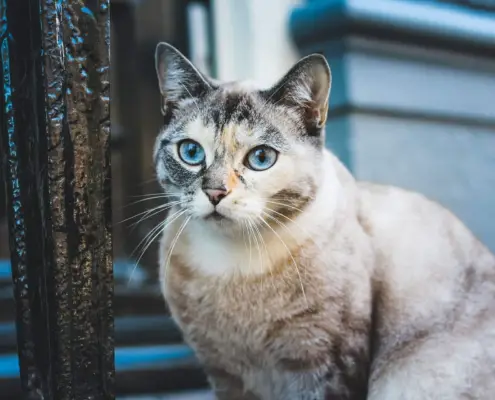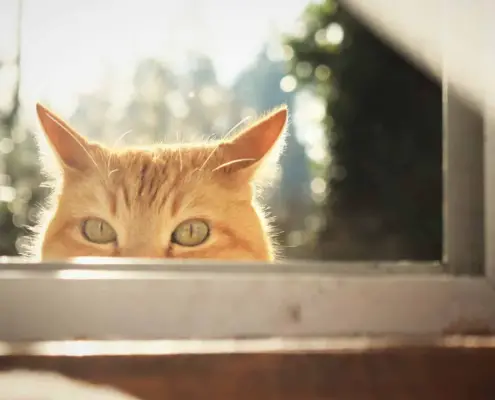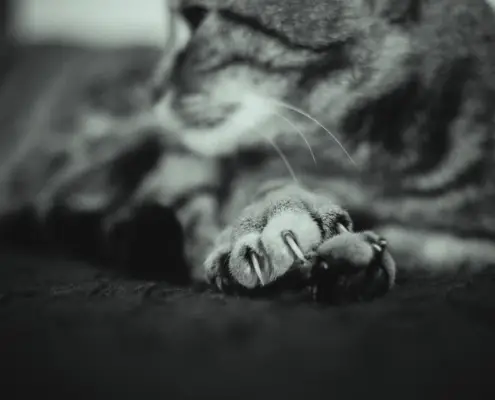
Cats are known for their graceful agility, independent nature, and, of course, their dislike of water. It’s a common stereotype that cats despise getting wet and will go to great lengths to avoid it. But have you ever wondered why cats exhibit such an aversion to water? In this article, we will delve into the science behind cats’ dislike of water, exploring the various reasons behind this intriguing feline behavior.
Evolutionary reasons for cats’ dislike of water
To understand why cats have a natural aversion to water, we must look to their evolutionary history. Cats are descendants of desert-dwelling ancestors who had limited exposure to bodies of water. In their natural habitat, water sources were scarce, and cats had to rely on their own grooming skills to stay clean and hydrated. Over time, this aversion to water became ingrained in their genetic makeup. It is believed that cats’ ancestors’ ability to keep themselves clean without the need for water played a key role in their survival, which is why this trait has been passed down through generations.
Additionally, cats’ ancestors were skilled hunters, and their wet fur would hinder their ability to effectively stalk and capture their prey. This further reinforces the evolutionary reasons behind cats’ dislike of water. Their aversion to getting wet is a deeply ingrained behavior that has helped them survive and thrive in their natural environments.
Sensory sensitivity in cats and its impact on their aversion to water
Cats possess highly sensitive sensory receptors, especially in their fur. These receptors allow them to be aware of even the slightest change in their environment. When a cat’s fur gets wet, it can feel heavy and uncomfortable, altering their sensory experience. The sensation of wet fur can be overwhelming for cats, causing them to feel vulnerable and anxious.
Furthermore, cats have a higher body temperature than humans. When their fur gets wet, it takes longer for it to dry, which can lead to discomfort and even hypothermia. This sensitivity to temperature changes further reinforces their aversion to water.
Behavioral factors contributing to cats’ fear of water
While evolutionary and sensory factors play a significant role in cats’ aversion to water, certain behavioral factors also contribute to their fear of getting wet. Cats are known for their need for control and dislike of unfamiliar situations. Water can be unpredictable and uncontrollable, making it a source of fear and anxiety for cats.
Additionally, many cats have had negative experiences with water, such as being forced into baths or accidentally falling into water. These experiences can create lasting trauma and reinforce their aversion to water. Cats are creatures of habit, and once they associate water with fear or discomfort, it becomes challenging to change their perception.
Cultural and environmental influences on cats’ attitude towards water
Cultural and environmental factors can also shape a cat’s attitude towards water. In many cultures, cats are not traditionally exposed to water-related activities or environments, leading to a lack of familiarity and understanding. The absence of positive experiences with water can contribute to their aversion.
Furthermore, the way cats are raised and socialized can influence their attitude towards water. If a cat is not exposed to water from a young age or is not provided with positive experiences involving water, they are more likely to develop a fear or aversion towards it. Environmental factors such as the availability of clean water sources and the presence of other animals can also impact a cat’s perception of water.
Myths and misconceptions about cats and water
Throughout history, various myths and misconceptions have perpetuated the idea that cats universally hate water. However, it is essential to debunk these misconceptions and understand that not all cats have the same aversion to water. While many cats may dislike getting wet, there are exceptions to the rule. Some cats are more tolerant of water and may even enjoy playing or swimming in it. It is crucial to recognize and respect the individuality of each cat.
Overcoming cats’ aversion to water: Tips and tricks
If you have a cat that is particularly averse to water, there are some strategies you can employ to help them overcome their fear. Gradual desensitization is key, starting with introducing your cat to small amounts of water in a controlled environment. Using positive reinforcement, such as treats and praise, can help create positive associations with water. Additionally, providing your cat with alternative grooming options, such as dry shampoo or grooming wipes, can help keep them clean without the need for water.
Fun facts about cats and water
Despite their general aversion to water, there are some fascinating exceptions and peculiarities when it comes to cats and water:
- Some cat breeds, such as the Maine Coon and the Turkish Van, have a higher affinity for water and are known to enjoy swimming.
- Cats have a unique physiological trait called the “blinking reflex,” which allows them to protect their eyes from water and prevent damage.
- In the wild, big cats like tigers and jaguars are skilled swimmers and have no qualms about getting wet.
Understanding cats’ water preferences: Wet food, water bowls, and fountains
While cats may dislike getting wet, it is essential to provide them with adequate hydration. Cats have a low thirst drive, and their ancestors would obtain most of their hydration from their prey. As a result, cats have evolved to obtain a significant portion of their water intake from wet food. Offering wet food to your cat can help ensure they stay hydrated.
Furthermore, the type of water bowl or fountain you provide can also influence your cat’s water preferences. Cats prefer fresh, clean water that is free from any odors or contaminants. Investing in a cat water fountain that continuously circulates and filters the water can encourage your cat to drink more.
Embracing and respecting cats’ individuality
In conclusion, cats’ aversion to water is a complex behavior influenced by a combination of evolutionary, sensory, behavioral, cultural, and environmental factors. While the majority of cats may dislike getting wet, it is important to remember that each cat is an individual with their own unique preferences and experiences.
As cat owners, it is our responsibility to respect and understand their aversion to water while ensuring their health and well-being. By providing alternative grooming options, gradually introducing water in a positive manner, and respecting their individuality, we can create a harmonious relationship with our feline companions while embracing their natural instincts.
If you enjoyed my article, I would appreciate you sharing it with your network.

Sima Ndlebe
Sima writes for CatBuzz. He is interested in Cats, Health and Fitness, and Entrepreneurship.
Published: 30 October 2023




